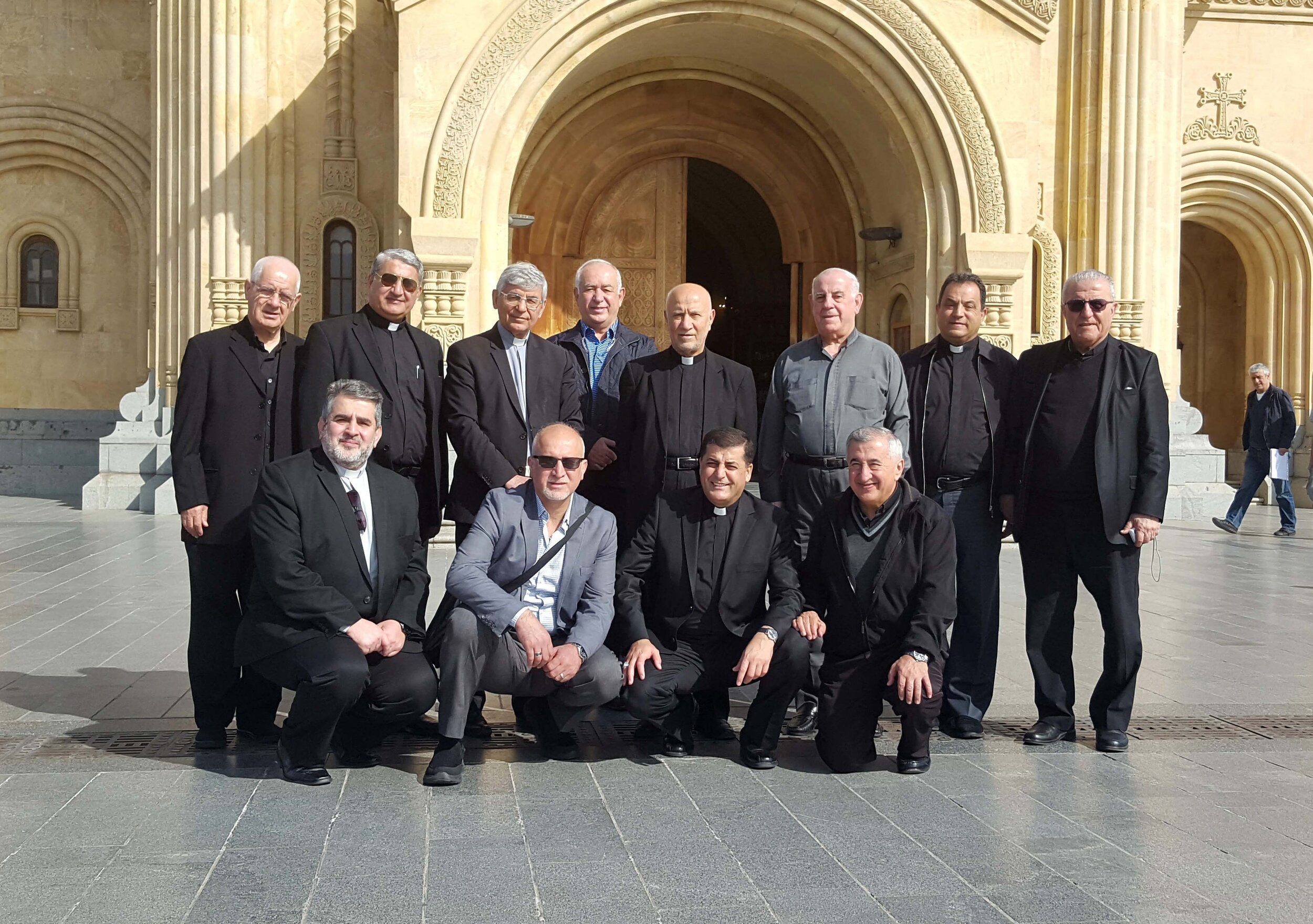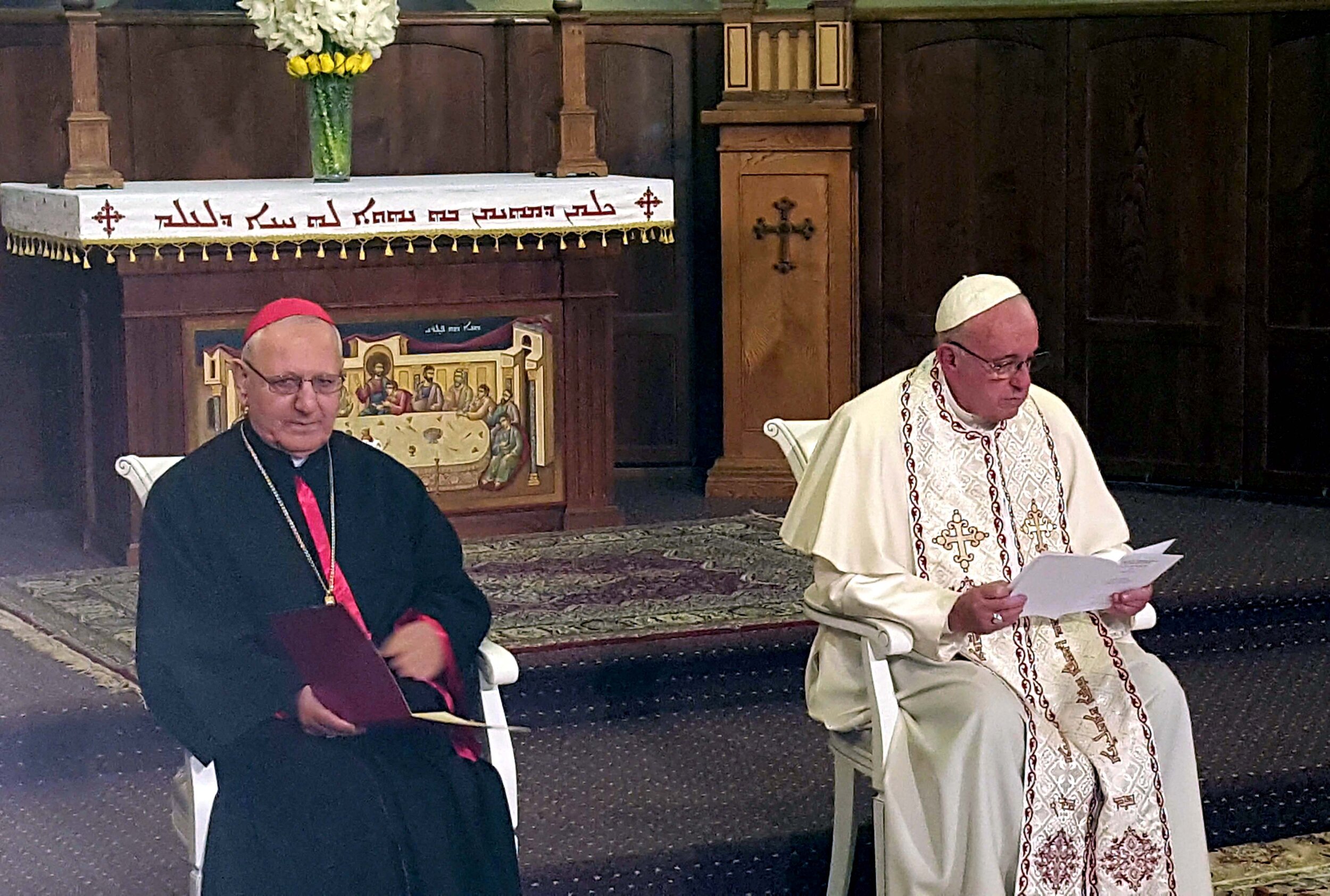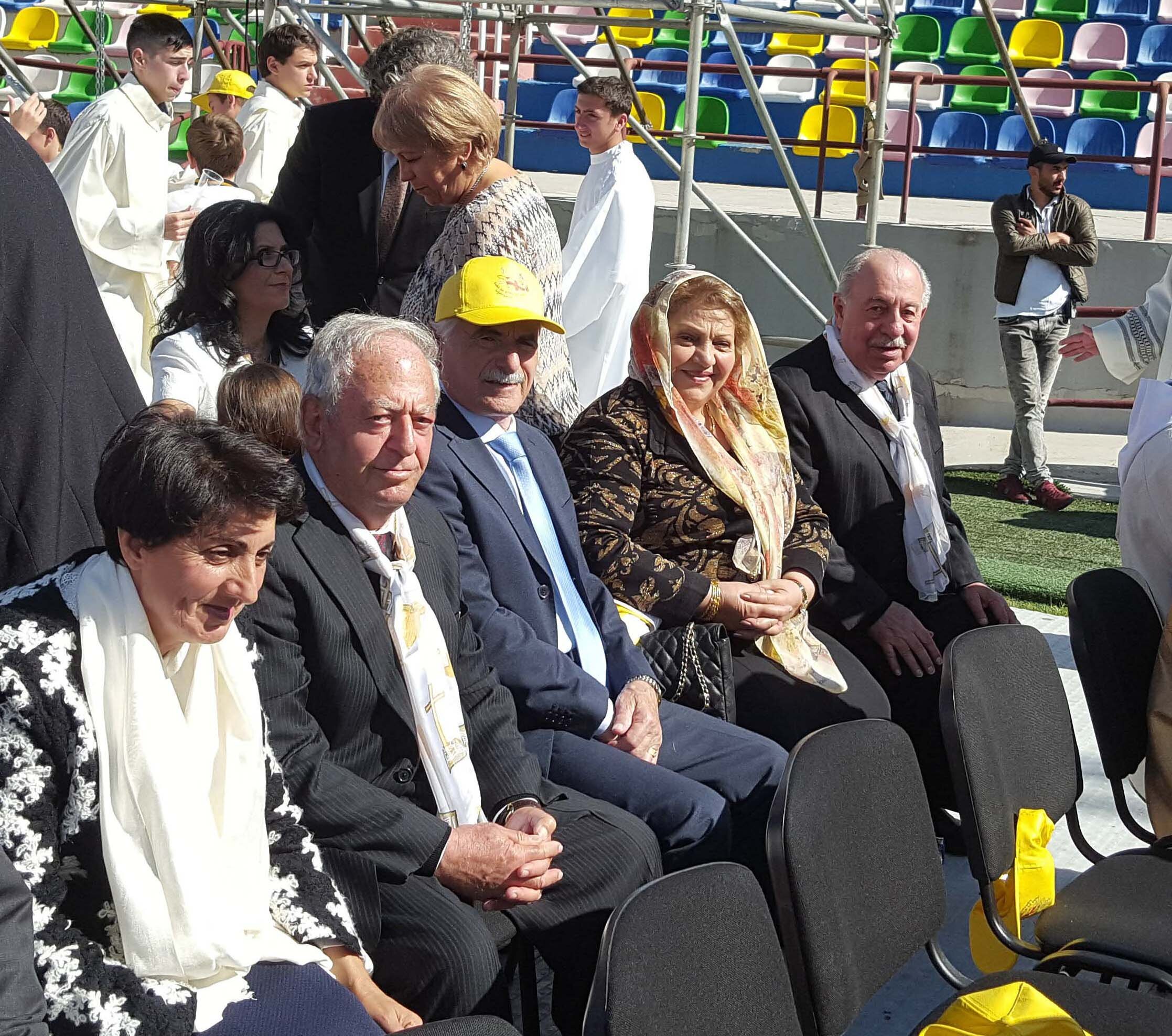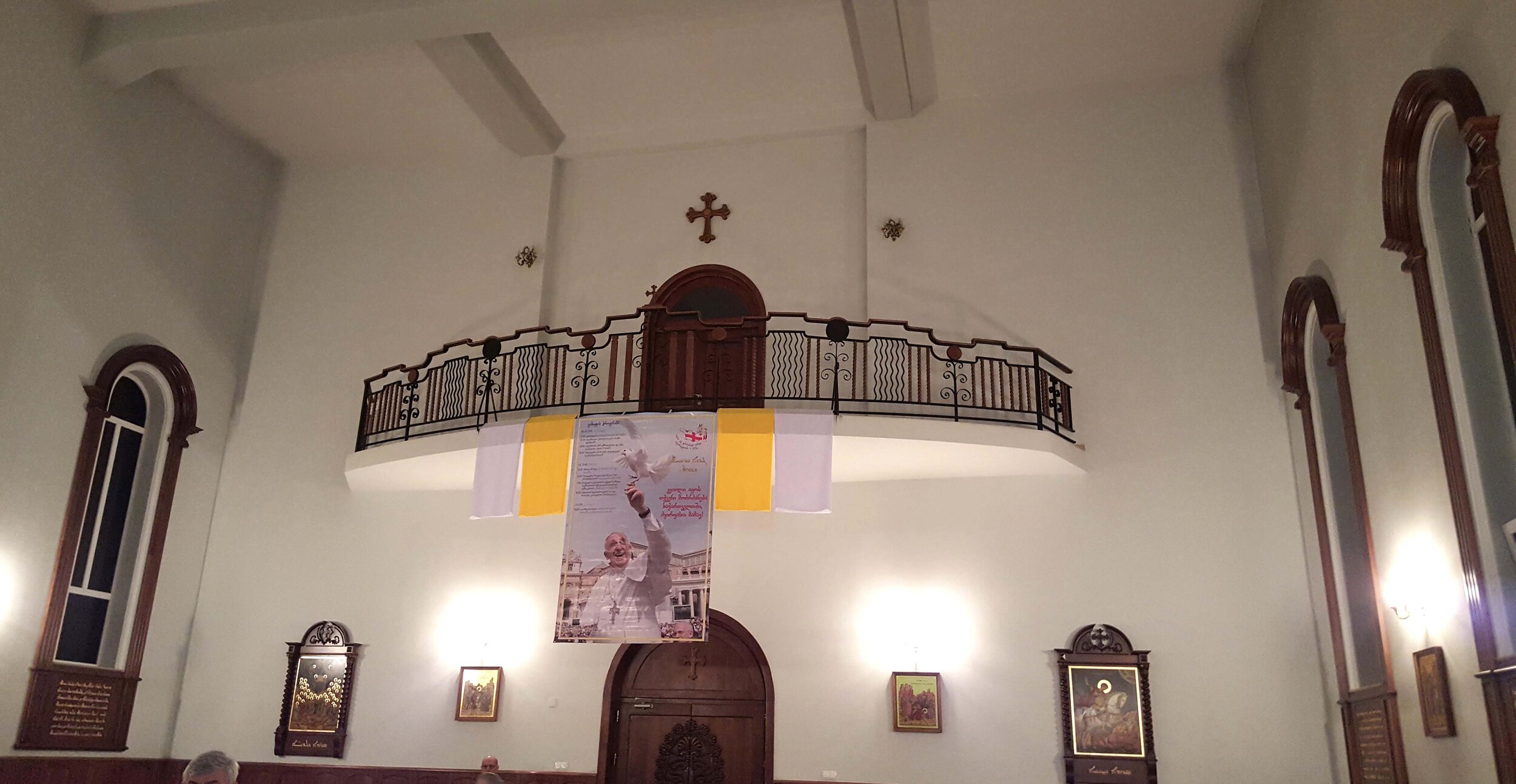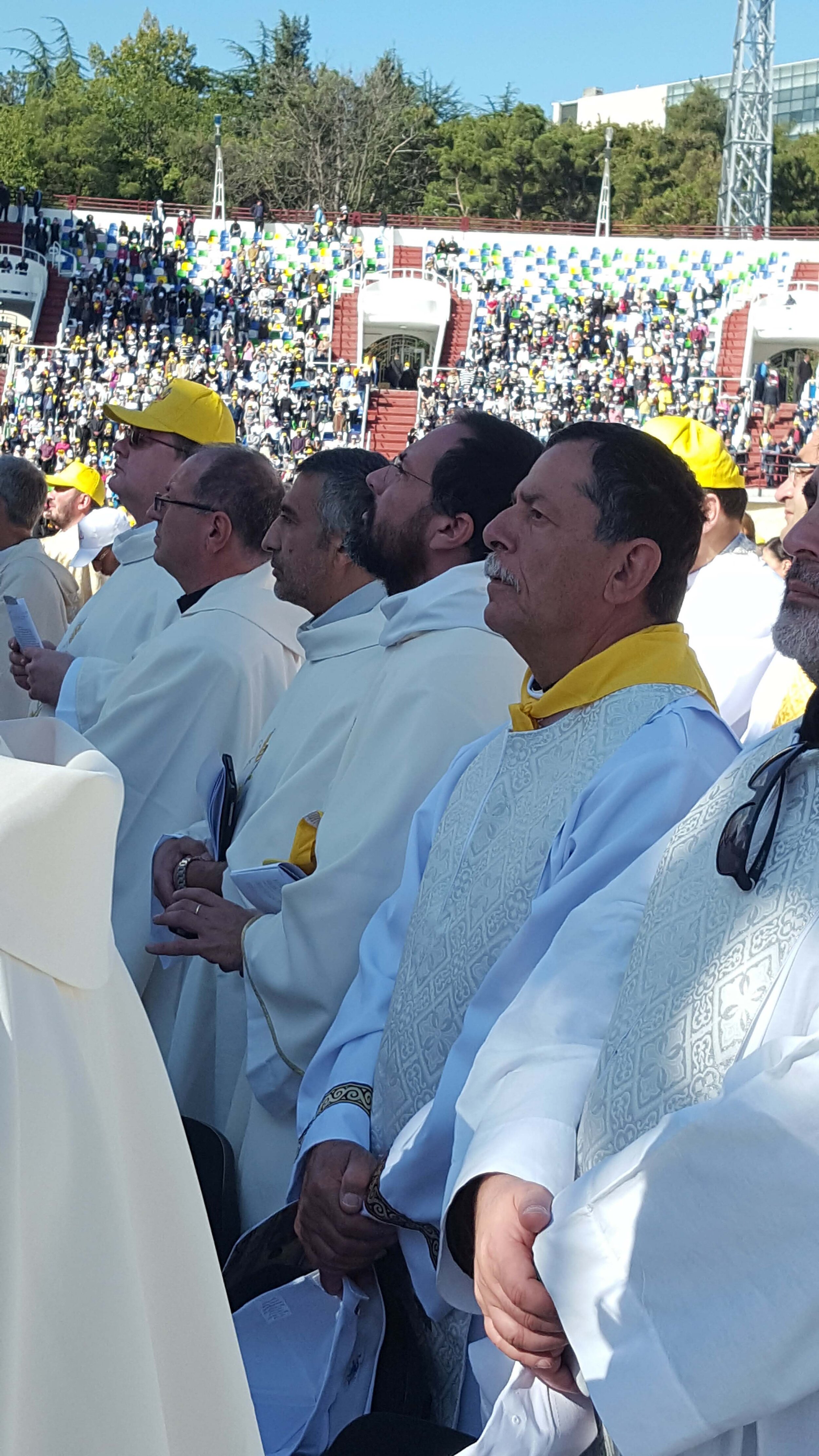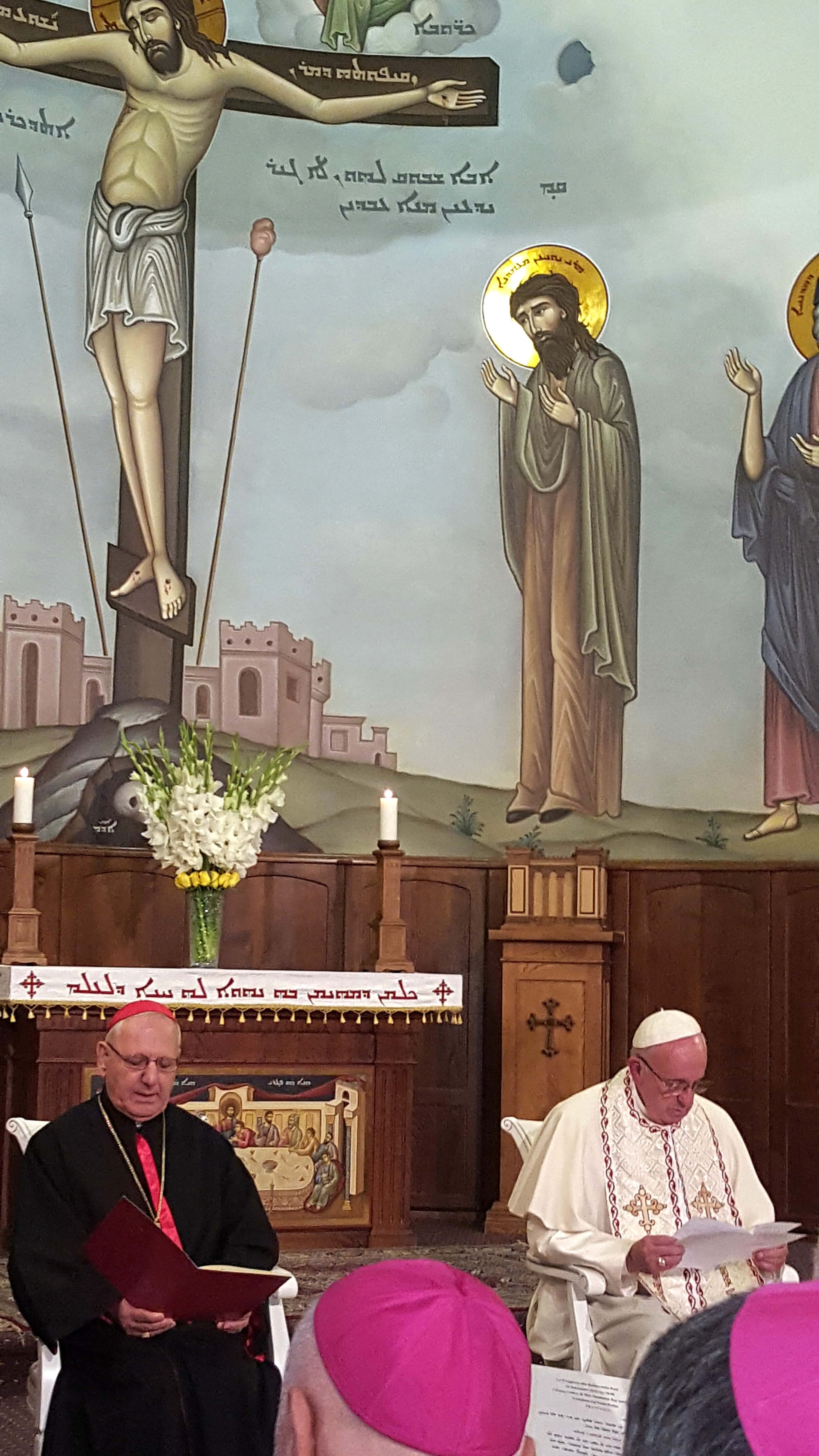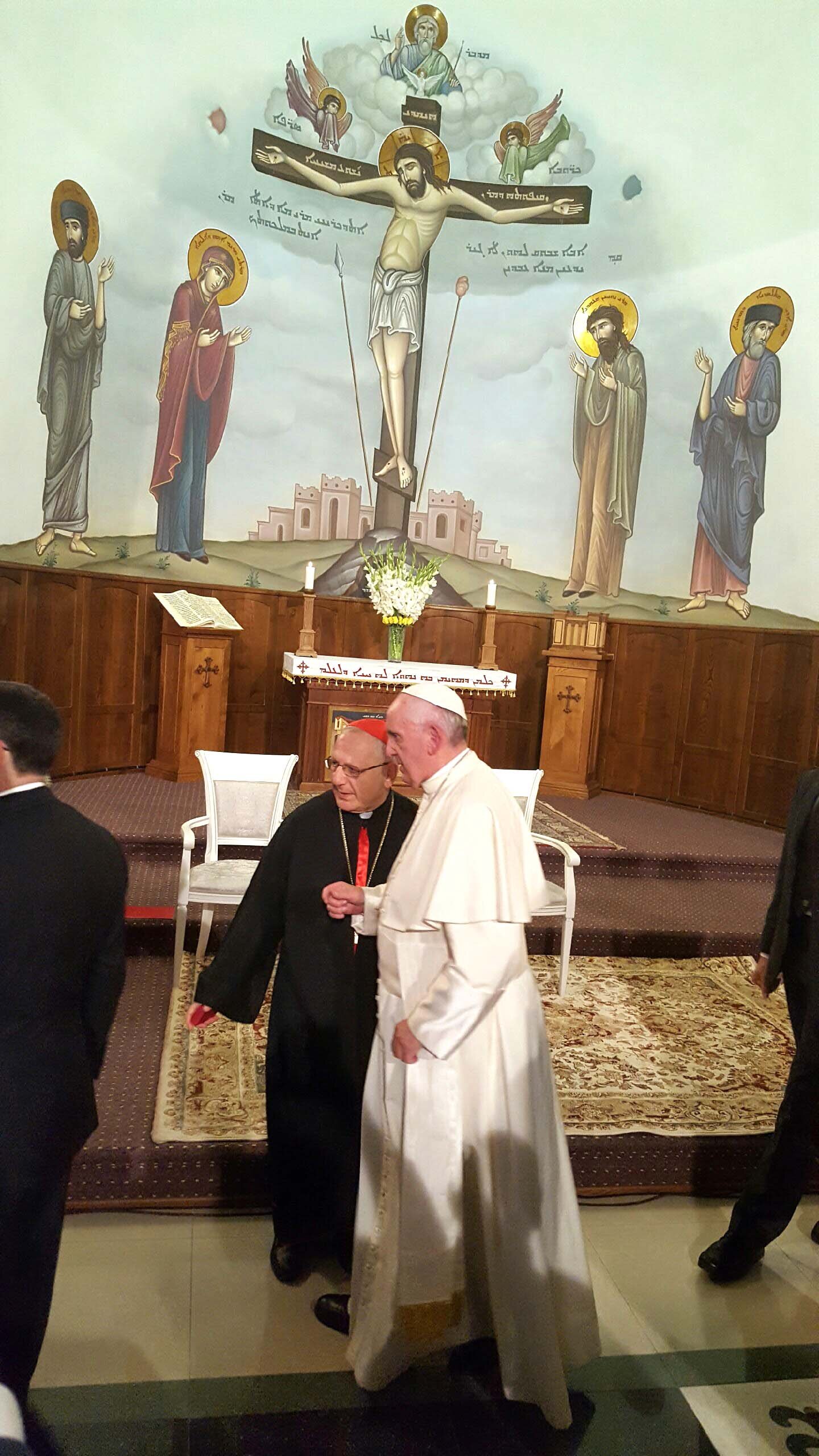Pope Francis has Visited Chaldeans Before
By Dr. Adhid Miri
Pope Francis arrived in Tbilisi, Georgia on September 30, 2016 for a two-day visit. He was invited to the ex-Soviet Republic by his counterpart in the Georgian Orthodox Church, Patriarch Ilia II.
The pontiff met with the Assyrian-Chaldean community and was welcomed by the Patriarch of Babylon of the Chaldeans and the Synod. Pope Francis described the Caucasus nation as, “a blessed land, a place of encounter and vital exchange among cultures and civilizations which, since the 4th century, discovered in Christianity its deepest identity and the solid foundation of its values.”
Indigenous Iraqi Catholics have been present in Georgia since the middle of the 18th century, living in various cities. According to the Soviet census of 1939, there were some 20,000 Assyrio-Chaldeans, most of them postwar refugees, living in what is now the Republic of Georgia. In 1990, that figure fell to 7,000. According to the census of 2001, only 3,000 people identified themselves as Assyrian or Chaldean. The numbers tell the story.
Intertwined with that story is the Assyrian story. In May 1995, an Assyrian-Chaldean mission was established in Georgia, under the direction of the Vatican, and in September 2000 a school for the faithful of this tradition was established. Increasing numbers of Chaldeans have led the call for a Chaldean church to be built in Georgia. Georgia is overwhelmingly Orthodox Christian but has a 2.5 percent Catholic minority, according to Vatican estimates.
To mark and celebrate the occasion of the Pope’s visit to the Georgian Chaldean community, many Chaldeans traveled from the US (including Michigan), Canada, Iraq, Jordan, Lebanon, and other parts of the world. Among them were Bishop Ibrahim Ibrahim, Bishop Frank Kalabat, Bishop Emanuel Hana Shaleta, Bishop Bawai Soro, Father Manuel Boji, Louie Boji, Salman Konja, Gina Boji Konja, Jamal Kalabat, Izzat Savaya, Shawqi Konja, Ikhlas Mansour, Sally Najor, and Sana Bahoura, among others.
Pope Francis celebrated Mass in the Meshki Stadium in Tbilisi on the second day of the weekend trip to the Caucasus, with a focus on preaching religious tolerance and peace. The stadium has a capacity of 25,000. It was attended by all members of the Chaldean clergy and the traveling delegation.
Later that afternoon, the Holy Father Francis traveled by car and visited the Chaldean Catholic Church of Simon, ‘Bar Sabbae,’ in Tbilisi. The church, dedicated to a 10th century Coptic saint, served as the place where he met with representatives of the Assyrian Chaldean community. This was the first time that a Pope had visited a place of Assyrian-Chaldean worship.
Upon arrival at the church, Pope Francis was welcomed by the Patriarch of Babylon of the Chaldeans, His Beatitude Raphael Louis Sako, Chaldean bishops, and the parish priest of the church. The Holy Father then walked in procession among the faithful of the Assyrian-Chaldean diaspora to the Chapel of the Blessed Sacrament. The procession included people from the nation’s capital along with others from nearby towns and villages and visiting delegations from Michigan and around the world. After singing a hymn and reciting a prayer in Aramaic, the Pope recited a prayer for peace.
Speaking in Italian, he implored the Lord to cast forth the shadow of his Cross over peoples at war, so they may learn the way of reconciliation, forgiveness and raise up Iraq and Syria from devastation, and reunite the dispersed children under His gentle kingship.
Next, before asking Our Lady to intercede in faith and hope, Pope Francis asked the Lord to sustain Christians in the ‘diaspora’ and grant them unity of faith and love. Upon conclusion of his first day in Georgia, the pontiff prayed for peace and individually greeted members of the Synod.
Finally, at the door of the Church, in a symbolic gesture, he released a dove into the evening air.
